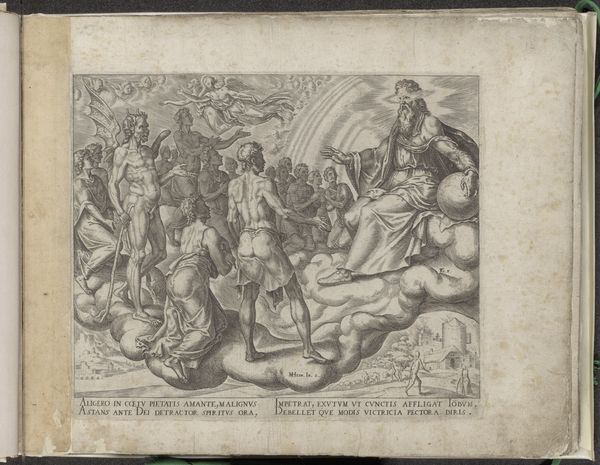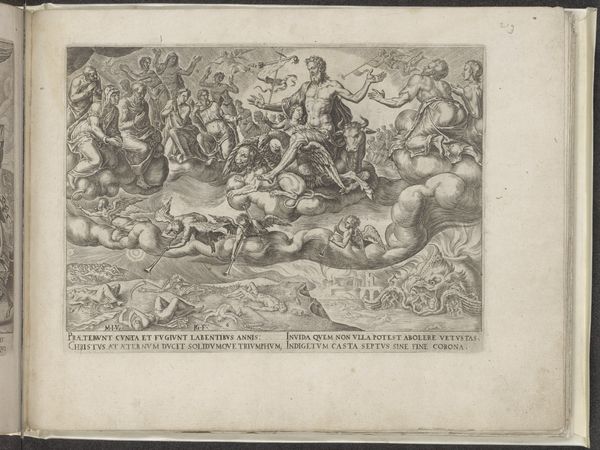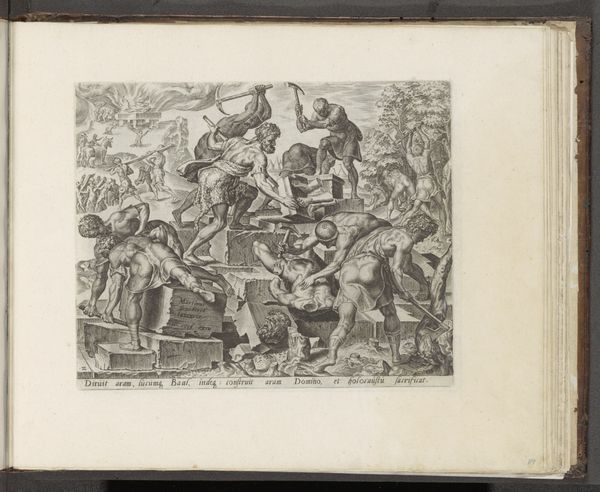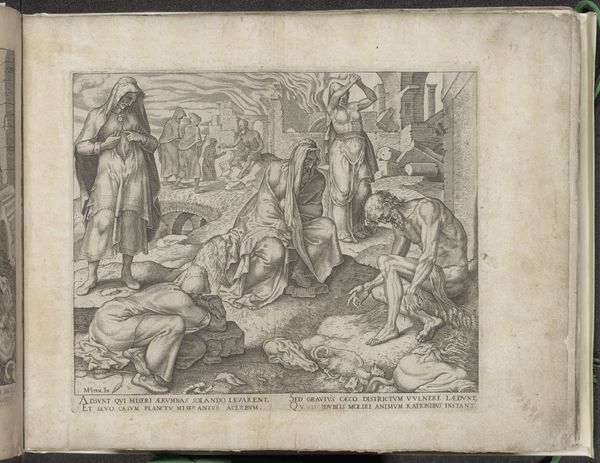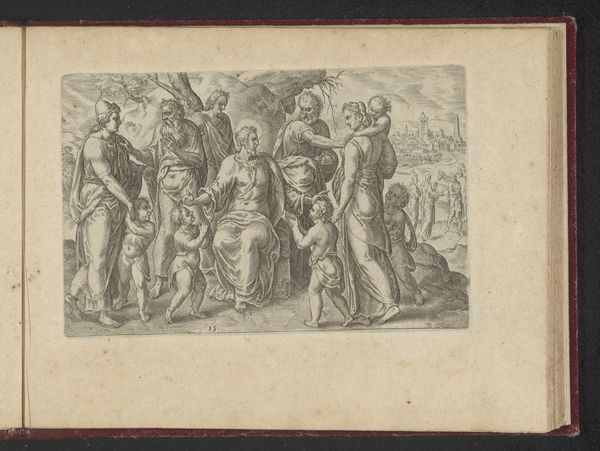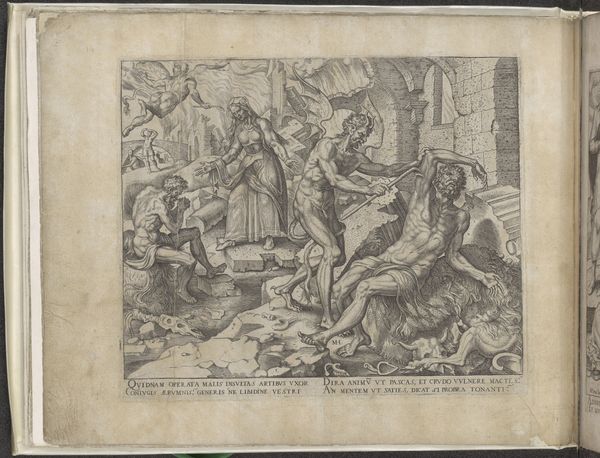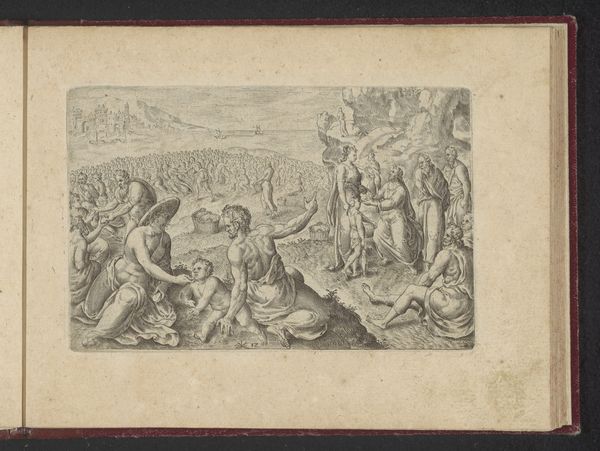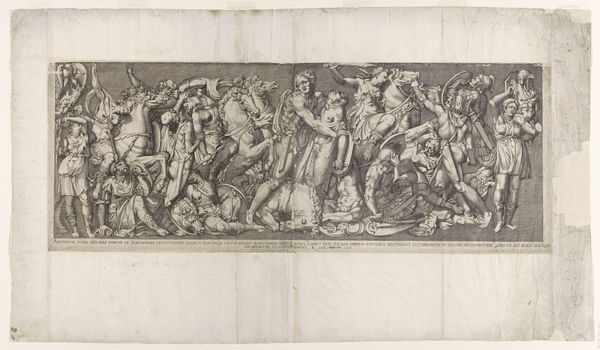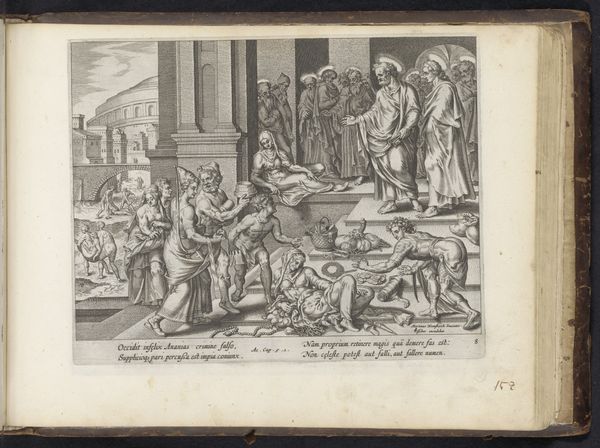
Satan daagt God uit Job niet langer de hand boven het hoofd te houden 1563
0:00
0:00
philipsgalle
Rijksmuseum
drawing, print, engraving
#
drawing
#
narrative-art
# print
#
figuration
#
coloured pencil
#
history-painting
#
engraving
Dimensions: height 208 mm, width 250 mm
Copyright: Rijks Museum: Open Domain
Editor: This is "Satan daagt God uit Job niet langer de hand boven het hoofd te houden," an engraving from 1563 by Philips Galle, currently housed in the Rijksmuseum. It depicts a dramatic scene, with a host of figures surrounding a central, bearded figure holding a globe. It all feels very theatrical, almost staged. How do you interpret the dynamics in play here? Curator: Considering this piece within its historical context is crucial. Galle was working during the Counter-Reformation. What narratives were deemed safe, even encouraged, for public consumption? Think about the rising power of printmaking during this period. It enabled wider dissemination of theological ideas and reinforced existing power structures. This print is not just an illustration, it's a carefully crafted argument about divine power, damnation, and the consequences of straying from religious orthodoxy. Who do you think was the target audience? Editor: Maybe the literate middle class, or even clergy members looking for visual aids for sermons? Curator: Precisely. Now, notice the composition. God is placed centrally, literally holding the world. What does that signify, given that religious power structures influenced governance at that time? And observe Satan's accusatory gesture. Galle is participating in a visual debate, reinforcing God's authority. The story of Job, as portrayed here, becomes a cautionary tale – question divine authority, and you invite suffering. Editor: So, it's less about artistic expression and more about social and political reinforcement? Curator: It's both. Galle was a skilled artist working within a complex system of patronage and censorship. Understanding that context reveals how art functions not just as a reflection of society but as an active participant in shaping it. Editor: That's fascinating. I had focused on the visual drama, but I see now that there's so much more to unpack when we consider the socio-political landscape. Curator: Exactly. Examining the public role of art reshapes how we perceive its meaning. We have to ask, "Who benefited from this image and its widespread distribution?" That gets us closer to its true impact.
Comments
No comments
Be the first to comment and join the conversation on the ultimate creative platform.
